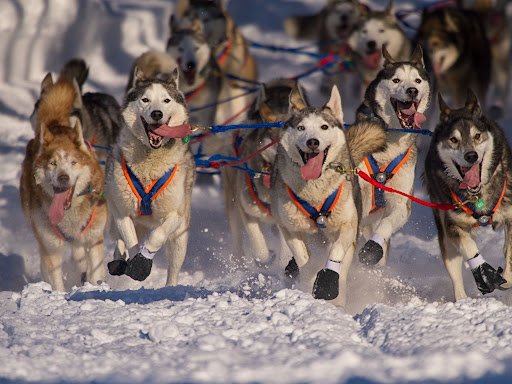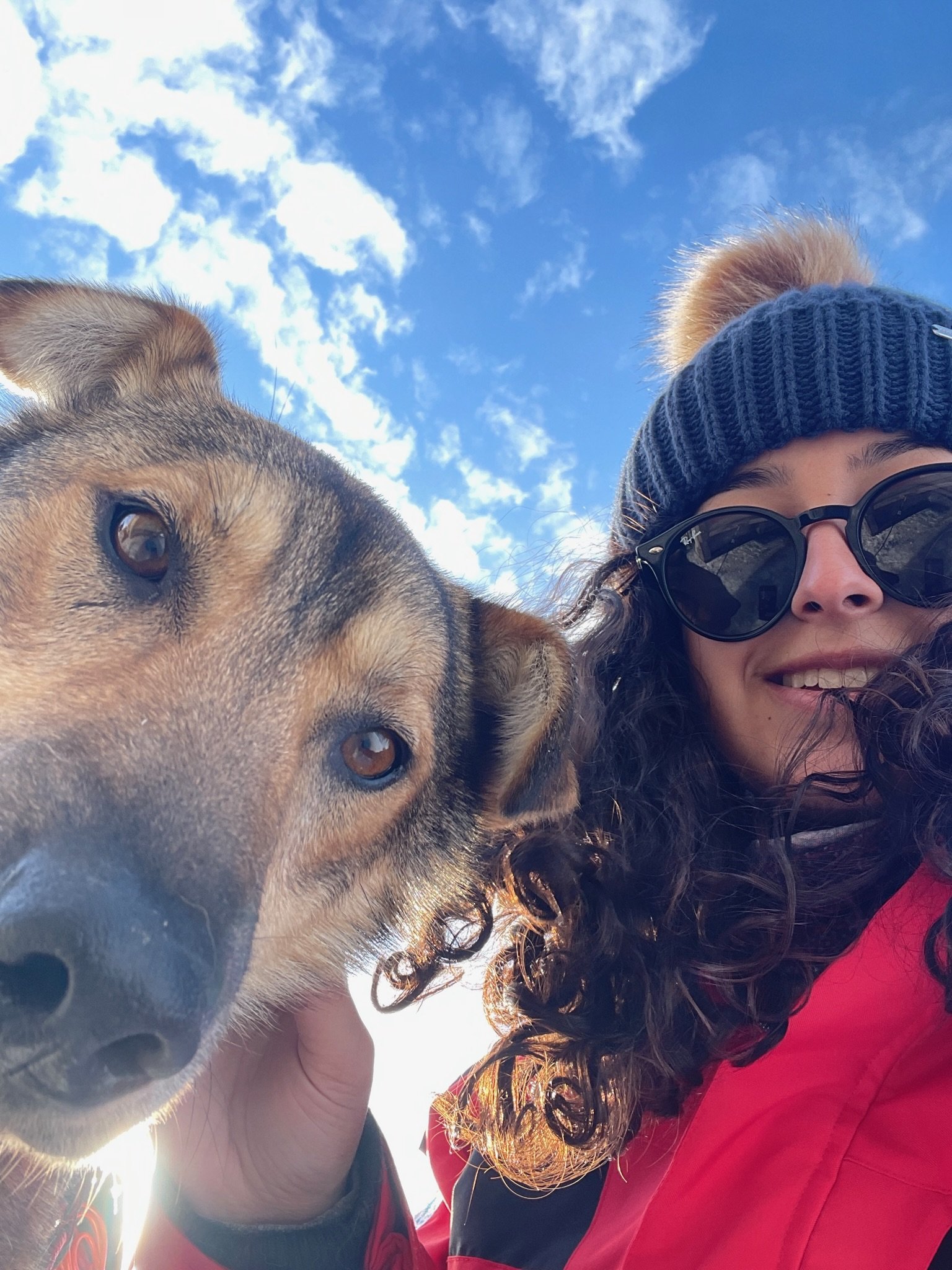Cyberian Huskies
This is a research project focused on developing a Wearable Activity and Gait Detection (WAG’D) monitor for canine athletes.
Team Members: Chad Ramey, Cole Anderson, Will Stull, Dr. Thad Starner, Dr. Melody Jackson
My Role: Usability Testing Lead, Software Co-Lead
Duration: August 2021 - May 2023
We created a wearable activity and gait detection monitor in an effort to identify early signs of gait and pull force changes, with the intent of reducing the number of injuries in sled dog racing. We sought to identify requirements for a wearable sled dog monitor and build a high-fidelity prototype to demonstrate proof-of-concept. The WAG’D monitor may also prove useful for other canine athletes and may have important applications for veterinarians for lameness detection.
Overview
Background
For many years, sled dogs have provided several services to mankind. Today, sled dogs still work to provide transportation as well as participate in sport, one example being the Iditarod race.
Because of the long duration and challenging environments, dogs are often dropped from the race due to injuries. Studies have shown orthopedic injuries to be the most common amongst sled dogs, often due to ice crystals getting stuck in their paws.
The Iditarod is a 1,049 mile dog sled race across Alaska’s frozen landscape.
In 2011, 38% of dogs dropped out of the Iditarod due to injuries, with 50.6% being orthopedic.
Motivation
At the moment, dog sled mushers have limited methods for detecting injuries. They mostly rely on visual observation and intuition. One problem they face is that the dogs are often so excited to run that they will keep pulling even past the point of exhaustion or injury. We wanted to find out how we can provide sled dog mushers with a way to detect injuries early on in order to prevent lasting damage.
Requirements Gathering
We conducted initial user and stakeholder interviews with:
4 Iditarod Mushers
4 Iditarod Veterinarians
We distilled the interview data into the key insights shown on the right. The insights displayed in the purple circle represents data from interviews with mushers, and the green represents data from interviews with veterinarians.
We then constructed an affinity diagram using the “walking the wall” technique to organize and better visualize the connections between all the notes. From there we came up with four main ideas:
Gait Analysis Stomach Listening
Tugline Monitoring Pulse Measurement
We then discussed feasibility, time, and usefulness to narrow down our focus to design a device which would monitor gait and pull force.
Prototype Implementation
WAG’D incorporates an ESP-32 based TinyPico microcontroller module, a 6 degree of freedom inertial measurement unit (IMU), a load cell with amplifier, and a rechargeable battery.
The 3D printed enclosure provides a sealed housing for the electronics along with mounting fixtures for attachment to sled dog and canicross x-back style harnesses. Inside the enclosure, the electronics provide for data collection, storage, and wireless communication.
User Testing
We conducted field testing with canine athletes and their owners, first in Georgia and then in Alaska. We reached out to Georgia Urban Mushing, a Facebook group of people who are involved in a sport called Canicross (canine cross-country). This allowed us to not only collect data but conduct feedback sessions with these athletes, so that we could make improvements to the device before we went all the way to Alaska. Once in Alaska, we conducted ethnographic research with a musher competing in the Iditarod as he trained in the week going up to the race. While there, we were also were able to conduct a feedback session with our original intended user.
Future Work
Adding a heart rate monitor as this is something important to mushers and they cannot visibly see this
Sonification of dog’s gait to see if all of the dogs on the team sync up
Expand to all canine athletes, gait monitor may be of use to veterinarians

















